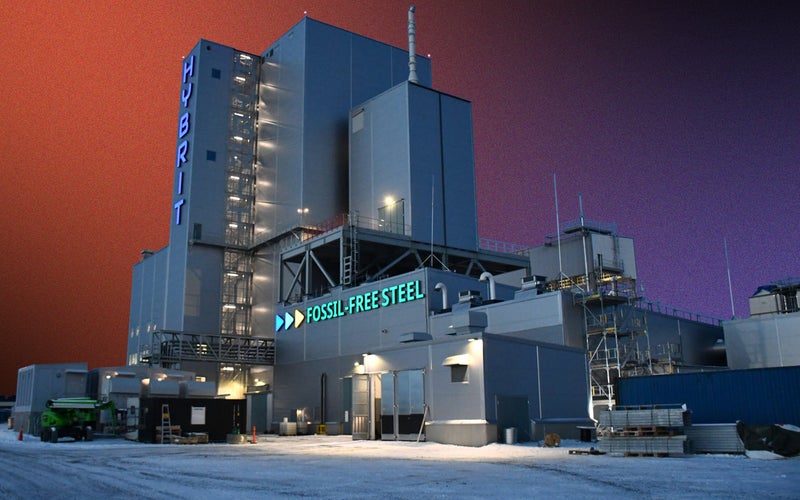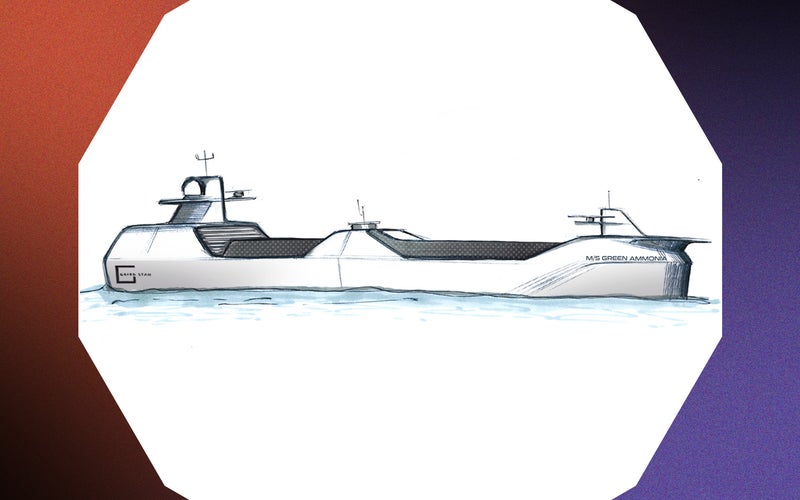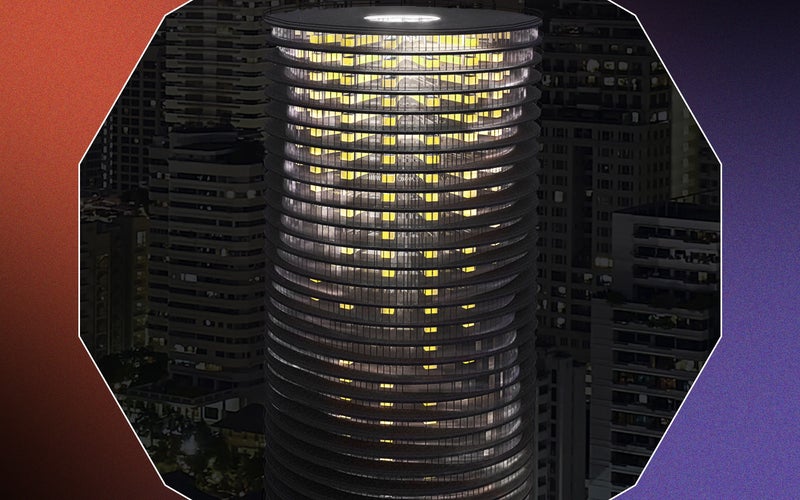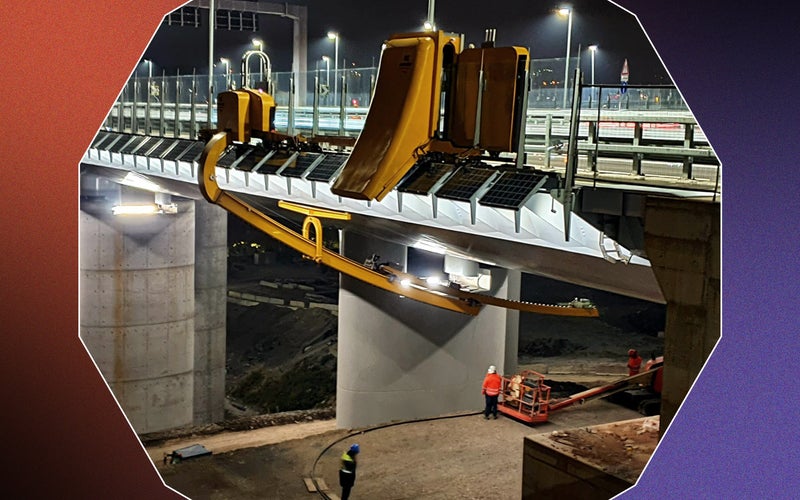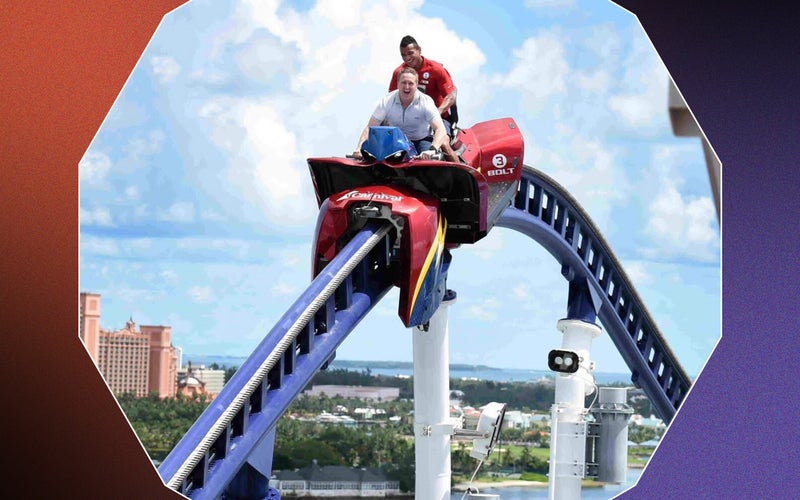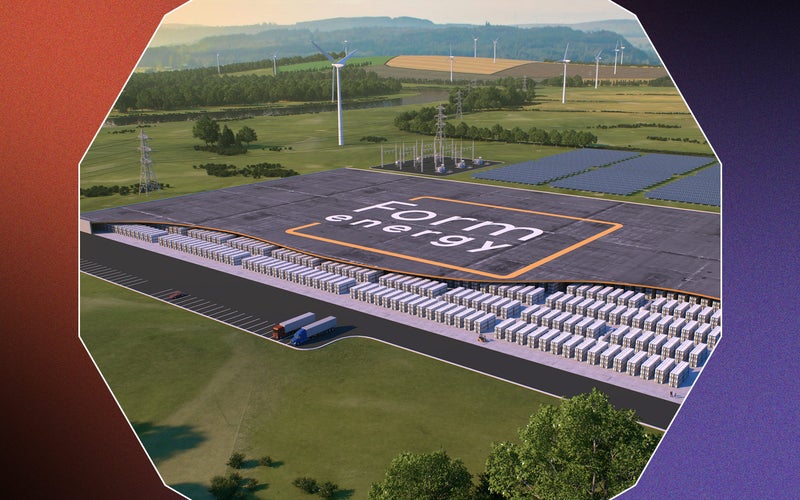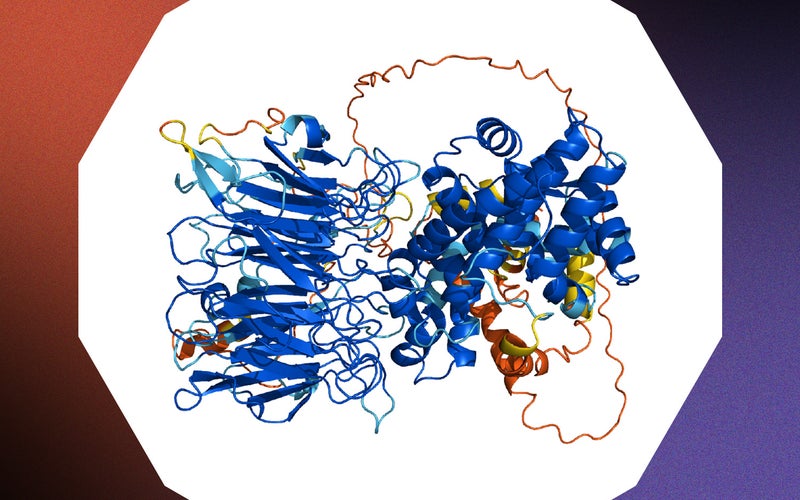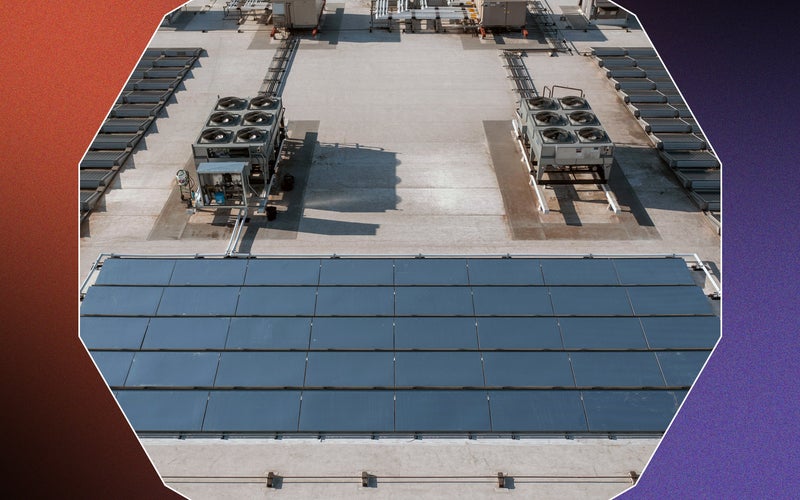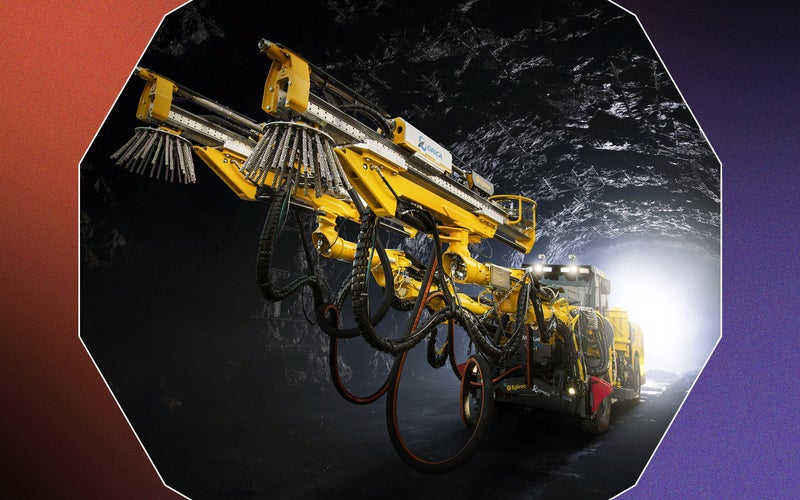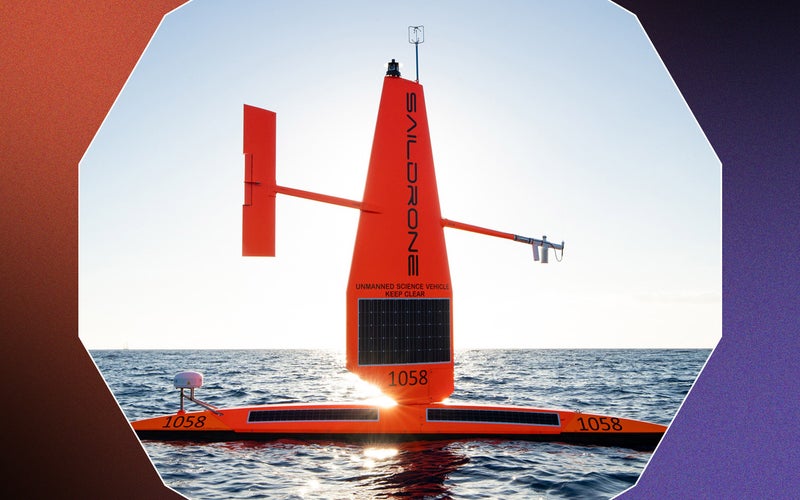The feats of engineering that dazzled us in 2021
The Best of What’s New in engineering helps us adapt to the realities of an ever-changing world.
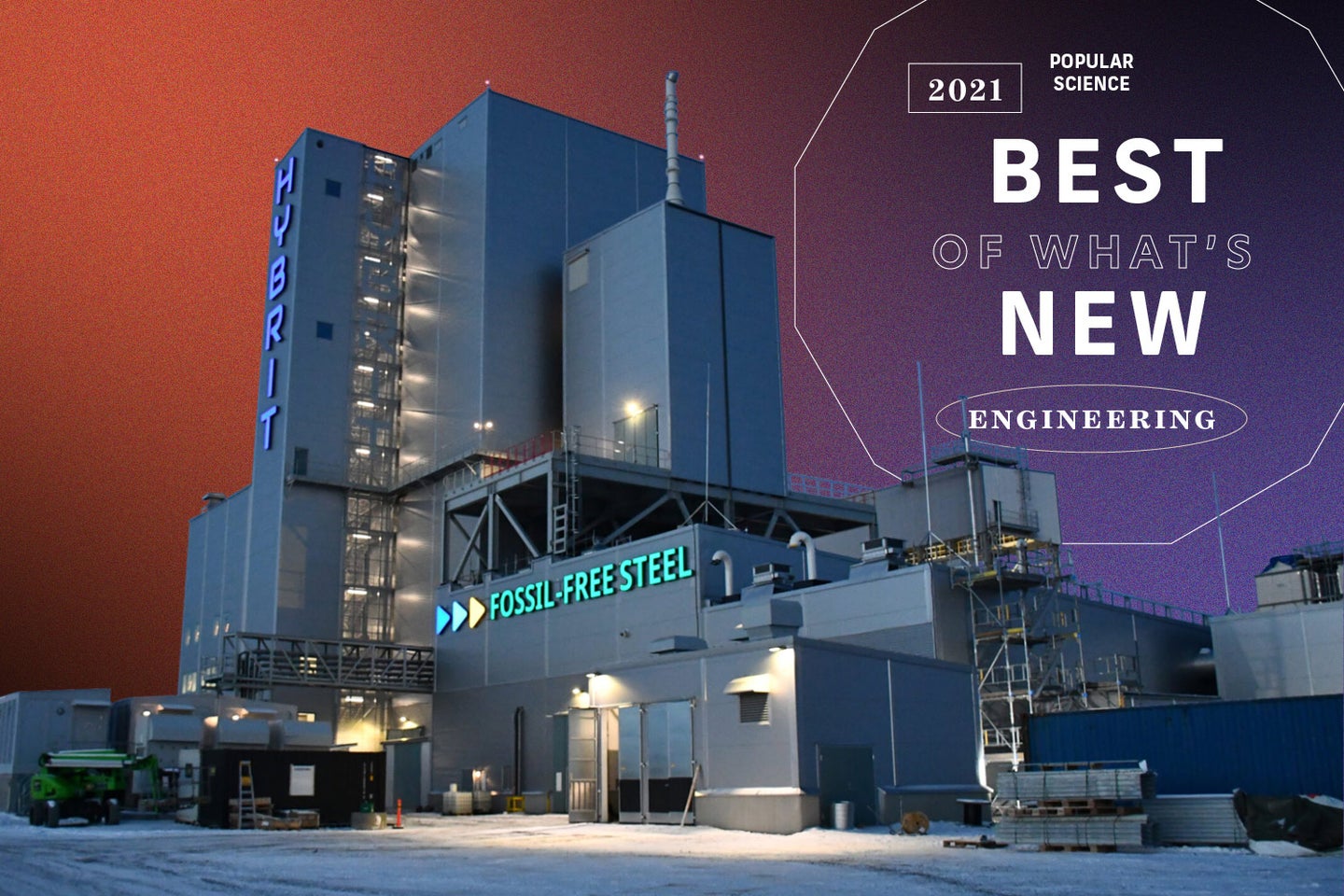
From deadly floods in Queens, New York, to a deep-freeze in Texas, the climate crisis is banging on the US’s front door. This year’s top engineering innovations reflect a growing awareness that crucial industries like construction and shipping can no longer conduct business as usual. These honorees answer some of the burning questions about the future of a burning planet, including how to address tough-to-decarbonize realms like food and energy production. Outside of just green tech advancements, these technologies reveal safer ways to mine, introduce AI that can untangle hidden mysteries of DNA’s structure, and provide a much-needed dose of high-flying fun.
Looking for the complete list of 100 winners? Check it out here.
Grand Award Winner: Steel with a smaller fossil footprint
Åsa Bäcklin/HYBRIT
Steelmaking yields between seven and nine percent of the world’s carbon emissions, mostly due to a specially processed type of coal called “coke.” At temperatures as high as 3,000°F, coke reacts with oxygen in iron ore, purifying the metal into a form needed to make steel—but belching carbon dioxide in the process. To reduce the footprint, a Swedish industrial consortium developed Hybrit, a steel whose production taps hydrogen, rather than carbon, to transform iron ore. The hydrogen, freed from water, reacts with the oxygen in ore in a machine called a shaft furnace, heated to 1,500*F with fossil-free wind energy and hydropower. The scheme releases hydrogen and water, instead of carbon dioxide, and the resulting “sponge iron” melts in an electric arc furnace with a small amount of carbon to create steel. Hybrit says the process has carbon dioxide emissions less than 2 percent of those from the standard coke-fueled regimen. This past summer, Volvo took delivery of the first batch of this “green steel” and used it to make a mining and quarrying vehicle.
A cleaner way to ship
ZEEDS Initiative
Container ships fuel our economy of cheap consumer goods, but create almost three percent of the world’s carbon dioxide emissions. Electric batteries don’t have the energy density to efficiently power the massive vessels—and plunking chargers in the middle of the ocean is pretty much impossible. This year, Finnish engine maker Wärtsilä teamed up with the Norwegian logistics giant Grieg to bet on carbon-free ammonia to propel future ships. Powered by a Norwegian wind farm, engineers will use electrolysis to create hydrogen gas that reacts with nitrogen in a factory to create ammonia. Wärtsilä already completed an engine burning a mix of 70 percent ammonia, and is planning a pure ammonia version to deploy in a tanker in 2024.
Your downtown sustainable seafood farm
Vertical Oceans
Global hunger for farmed shrimp has destroyed some 3.4 million acres of mangrove forests since 1980, mostly in Southeast Asia. Tearing apart those carbon-absorbing ecosystems gives the practice a footprint higher than dairy cattle, pigs, or chicken. Disease outbreaks and waterways choked with waste also plague the industry. The “Vertical Oceans” model takes the whole operation indoors. The shellfish live in modular school-bus sized tanks, and algae, seaweed, and bottom-feeding fish filter out waste. This way, nearly 100 percent of the water gets recirculated, and there is no need for a sewer. A prototype in Singapore delivered 10 harvests of shrimp this year, totaling more than a ton of crustaceans.
A bridge that spots its flaws
Camozzi Group
It’s not entirely clear what caused the 2018 collapse of the Genoa bridge in Italy that killed 43 people. Experts theorize that heavy traffic loads, and corrosion from salty air, factory pollution, and high-rising river waters all played a part. So after Genoa-born architect Renzo Piano designed a replacement, a variety of automatic sensing features were added to detect faults. A pair of two-ton inspection bots traverse the bridge on a carbon composite track, taking 25,000 photos of the undercarriage every eight hours, which allows machine vision software to spot any anomalies. Solar panels meet 95 percent of the bridge’s energy demands, including for lighting and sensors that check for dangerous joint expansion.
The first sea-bound floating rollercoaster
Carnival Cruise Line
Normal roller coasters use gravity to send thrill-seekers zooming and looping. But if you want to build a ride on a cruise ship—where stable, level ground is far from guaranteed—you have to get creative. Carnival Cruise Line’s BOLT coaster uses electricity to power its wee motorcycle-esque cars along a long, looping track. Riders control the speed, up to 40 mph, and travel 187 feet above sea level. Using the motor for propulsion, rather than steep freefalls, prevents the experience from reaching unsafe speeds.
Batteries that could make dirty electricity obsolete
Form Energy
To maintain fully renewable grids, utilities need big, inexpensive batteries to meet peak demand when the wind isn’t blowing or the sun isn’t shining. But, the lithium-ion cells inside laptops and EVs are expensive. So Form Energy has pioneered a new and highly efficient battery chemistry based on one of the most abundant metals in the Earth: iron. The company’s “Big Jim” prototype discharges electrons by reacting ambient oxygen with iron, creating rust. Inbound electrical current turns the rust back into iron, releasing oxygen, and recharging the battery. Environmental engineers say a battery that runs at $20 per kilowatt-hour is the magic number for utilities to say goodbye to coal and natural gas—which is where Form Energy hopes to price Big Jim’s final product.
AI that predicts the 3D structure of proteins
DeepMind
Before this year, science knew the exact 3D shape of only 17 percent of the proteins in the human body—essential components of life responsible for everything from cell maintenance to waste regulation. Understanding how these chains of amino acids pretzel themselves into unique configurations has been something of a holy grail for 50 years. AlphaFold, a machine learning algorithm, has now cracked the structures of more than 98 percent of the 20,000 proteins in the human body—with 36 percent of its predictions accurate down to the atomic level. DeepMind has put its source code and database of predictions in the public domain, opening up new possibilities for those developing new medications, doctors trying to create inhibitors for pathogenic mutations, or designers developing new materials.
Using the sky as an air conditioner
SkyCool Systems
Air conditioners and fans already consume 10 percent of the world’s electricity, and AC use is projected to triple by the year 2050, sucking up more energy and pushing heat back into the surrounding landscape. SkyCool is breaking this dangerous feedback loop with rooftop nanotech that reflects light. Coated with multiple layers of optical films, the aluminum-based panels bounce radiation at wavelengths between 8 and 13 micrometers, a specific spot that allows the waves to pass through Earth’s atmosphere and into space. In doing so, the panel temperatures decline by up to 15°F, offering emissions-free cooling to a building’s existing systems. A prototype installed last fall on a grocery store in Stockton, Calif., cooled water pipes beneath the panels to chill the store’s refrigeration system—saving an estimated $6,000 a year in electrical bills.
A pair of robotic hands for laying explosives
Orica
Mining is one of the world’s most dangerous industries, but those who have to blast the tunnels are particularly vulnerable—not necessarily from explosives, but from seismic activity or rock falls that occur while laying the charges. Like a jumbo version of Ripley’s power loader from Aliens, the Avatel robot allows a single employee to place explosive charges to access to the gold, copper, and iron ore. From a protected cabin, the miner manipulates a pair of arms to place explosives, while engineers and geologists back at the control room remotely offer real-time advice as conditions change. Once the charges are set, the driver moves the Avatel clear and wirelessly sends a signal to detonate.
A look into the eye of a hurricane
SAILDRONE
To understand how hurricanes intensify and better forecast future disasters, scientists need data about barometric pressure, air and water temperature, humidity, and wind conditions inside a raging storm. Powered by the sun and wind, the autonomous 23-foot Saildrone became the first-ever robotic vehicle to navigate into the eye of a hurricane this past September, when it entered the category 4 storm Hurricane Sam. With its instrument wing shortened to better endure extreme conditions, the Saildrone vessel offered first-of-its-kind footage and readings, all amid winds hitting 120 mph. Labs across the country are already putting this floating Swiss Army Knife, which offers data from the ocean’s surface missing from satellite imagery, to work: NASA to augment imperfect satellite readings and study climate change, and NOAA to survey the health of Alaskan pollock.
